Features hitting a foreign body in the nose
There is a foreign body in the nose for various reasonsMost often, children of preschool age face this problem, but this also happens in adults. A foreign object sometimes does not cause any symptoms, but it can also give serious complications, therefore it is important to apply in time for medical care and extract it. Let us consider in more detail how the pathology manifests itself in different situations, and what features it has.
Where do they come from
Foreign bodies of the nose are objects accidentally or deliberately caught in the nostrils. Children independently insert small particles into the hole; this happens out of curiosity. In adults, there is mainly random penetration of objects. They can get for such reasons:
- while playing with children;
- when bathing in open water;
- by inhalation of air (it may contain dust, insects and other small particles);
- when eating;
- during vomiting.
Foreign bodies in the nose can even be found in people who carefully monitor personal hygiene and do not try to stuff objects into their nostrils. High probability of accidental penetration of small particles is observed when vomiting or eating. Penetration of pieces of food occurs by casting through the choanal holes connecting the pharynx to the nose.
Provoking reasons
There may be a feeling of a foreign body in the nostrils for various reasons. Often, objects fall into the nostrils in a natural way - by inhalation of air or improper handling of various things. However, there are cases when, during surgery, the doctor leaves cotton swabs, various tool tips or other parts of the working inventory in the aisle. In this case, the pathology has an iatrogenic origin.
Serious injuries can lead to the penetration of pieces of glass, stones, parts of wood and other objects into the nostrils. Foreign bodies can be located on the entire inner surface of the nose.
If they got into it naturally, then most likely that the doctor will find them in the lower nasal passages, but there are cases when the object is digging into nasal septum or nasal concha. It also happens that with inhaled air the particles move into the nasopharynx.
Types of particles
The presence of a foreign body in the nose is determined by either the patient or the doctor. A variety of objects can fall into the nostril. To make it easier to decide on how to remove them, all particles were divided into main groups:

There is also a separation of foreign bodies with respect to visibility during radiography. If the subject can be visualized during the examination, it is radiopaque. These are mainly small inorganic and solid organic objects.
If there are no changes in the picture, then we can say that the body is non-X-ray contrast. In general, food particles and living organisms that tend to decompose in the nose are not visible on the film.
How to recognize
If something gets into the nose and causes discomfort, you should immediately contact the doctor. However, the patient does not always notice how small particles penetrate into the nostrils, sometimes the situation does not impose itself at all or the violation is “masked” for other diseases. In this case, you should pay attention to the number related symptomswhich most often disturb the patient:
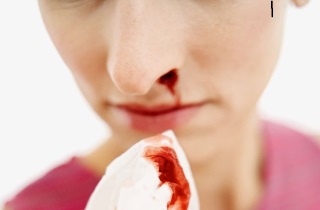
If these signs appear, then a foreign body that gets into the nose interferes with the normal functioning. Late access to a doctor can lead to the addition of secondary infections and a number of complications.
Symptoms of a long stay of foreign objects in the nose are:
- unpleasant smell from the nose (a consequence of the decomposition of organic or living foreign bodies);
- purulent discharge;
- inflammation and tenderness of the mucous membrane;
- unilateral headache;
- the formation of rhinoliths;
- loss of appetite;
- sleep disturbance.
Possible complications and risks
Remove the object that prevents normal breathing and living, you need to immediately. If you ignore it, you may have serious health problems. Late request for medical care leads to the fact that foreign bodies cause such complications:

Bodies of organic origin can change their volume, size and even texture, if they are in the nasal passages for a long time. For example, beans or peas can increase under the influence of mucus, in which case there is a complete or partial respiratory failure in the affected nostril. Also, living organisms and plant particles can decompose or decay into pieces.
The most dangerous thing is when a rhinolite starts to form around a metal or inorganic object - a stone consisting of salts that contain mucus. Rhinolite can be smooth and rough, soft and hard, it constantly irritates the mucous membrane, which leads to chronic rhinitis.
Also, if a foreign body is in the nostril for a long time, granulation tissue grows, which complicates diagnosis and causes frequent bleeding.
Features of diagnosis
The problem is identified by an otolaryngologist (ENT). In some cases, a rhinoscopy is enough for making a diagnosis - an examination with special tools. If the item has moved to the lower section, then fibrinoskopiya is needed. In this case, the doctor must treat nasal cavity adrenaline to relieve swelling that interferes with the normal examination of the affected nostrils.
If the object cannot be examined, then it is probed with a special metal probe made of metal. However, the tool only helps to recognize dense bodies.
When attaching concomitant infections and the inability to conduct a normal visual study, techniques such as ultrasound diagnosis, fluoroscopy, computed tomography and magnetic resonance imaging are used. Be sure the patient is taken bakposev mucus.
Methods for removing objects from the nostrils
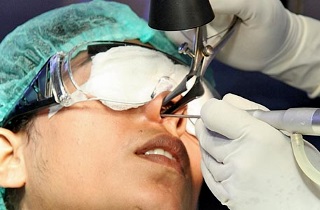 It is important for patients to remember that the earlier they come for an examination to the ENT, the more chances they have to quickly and painlessly get rid of the foreign body. If you consult a doctor in time, you will be able to avoid the appearance of edema, inflammation and growth of granulation tissue, which greatly complicates the removal of objects from the nostrils. Otolaryngologists use such methods to extract bodies:
It is important for patients to remember that the earlier they come for an examination to the ENT, the more chances they have to quickly and painlessly get rid of the foreign body. If you consult a doctor in time, you will be able to avoid the appearance of edema, inflammation and growth of granulation tissue, which greatly complicates the removal of objects from the nostrils. Otolaryngologists use such methods to extract bodies:
- Blowing off. This is the easiest way to help get rid of a foreign object. In order for the procedure to be successful, the patient must close his healthy nostril with a finger, take full air and breathe it out with great force through the sick nostril. Small and smooth objects simply “fly out” when performing such a manipulation, relief comes immediately, breathing resumes and discomfort disappears.
- Endoscopy. Endoscopic elimination is indicated for children and adults who could not get rid of the problem with the help of blowing. It can be used as a local anesthesia, and general anesthesia. The body is removed from the nasal passages with a blunt hook, the ENT picks up small particles and removes them.
- Surgical intervention. Shown only in the most difficult cases, is carried out under general anesthesia. If it is necessary to get rid of foreign objects around which rhinoliths were formed, the stones are immediately crushed, and only then they are taken out with foreign bodies.
Obligatory during the removal of objects are procedures such as disinfection of the mucous membrane, flushing of the nostrils, use vasoconstrictor drops. Also, in some cases, washing of the sinuses, the establishment of drainage is required. If a foreign body caused the accession of secondary infections, they are also treated.
Prohibitions and warnings
The patient should remember that getting a foreign body into the nasal passage is a good reason to visit an otolaryngologist. It is forbidden to carry out any manipulations on your own, as you can only exacerbate the situation. It is also impossible to take such measures:
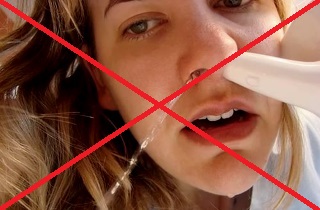
Good prevention will be the observance of elementary safety rules. Children should not be left alone with small objects, cereals and other particles that can theoretically be put into the nostril. They should also choose toys that do not contain small details.
Adults should wear personal protective equipment if they know that foreign bodies are likely to be inhaled if they breathe air. Eat slowly to avoid being thrown at. airways, do not bathe in dirty reservoirs where organisms can easily be found that penetrate the nose.
Let's sum up
A foreign body can fall into the nostril in different ways. The violation is often not manifested by any signs, but causes some discomfortsimilar to the symptoms of an incipient cold.
If you find the first signals that indicate the presence of foreign objects in the nose, you should consult a doctor. It is important to remove particles in time so that they do not cause the development of complications.
Foreign body a nose is an alien object that accidentally gets into the nasal cavity - berry bone, bead, sunflower seed, mosquito or other insect, small detail of a toy, a piece of plastic, wood, food, paper or cotton wool. The presence of a foreign body in the nose can proceed without symptoms. This is mainly manifested by pain, discharge from the affected half of the nose and one-sided stuffiness. Diagnosis of a foreign body of the nose is based on anamnesis, rhinoscopy, otolaryngological examination, X-ray, and CT data. The essence of the treatment of a foreign body of the nose is reduced to its maximum elimination by blowing, surgical or endoscopic removal.
Most often, otolaryngologists diagnose foreign bodies in the nose in children. A child during games may intentionally introduce a different object into his nose without thinking about the consequences. Foreign bodies, thus trapped in the nasal cavity, are usually in the lower nasal passage. Among the total number of foreign bodies in the nose, such cases amount to 80%. Much less common are foreign objects in which one half is stuck in the nasal septum, and the other in the lower turbinate. Foreign bodies trapped in the nose at random are often localized very deep.
Classification of foreign bodies of the nose
Foreign bodies in the nose are extremely diverse in size, shape and character. So, foreign bodies of the nasal cavity are classified into:
- metal (screws, coins, metal constructor parts, nails, needles, pieces of fire projectiles, buttons);
- inorganic (beads, plastic parts, pebbles, beads, pieces of glass, cotton);
- live (larvae, insects, roundworm, leeches);
- organic (peas, seeds of various plants, parts of food products consumed in food, small beans, fruit stones, pieces of vegetables and fruits).
Also, the foreign bodies of the nose are divided into radiopaque and radiopaque, depending on whether they are visualized by x-ray or not. X-ray contrast bodies are glass, metal objects, bones, parts of toys, buttons.
Complications of the foreign body of the nose
Foreign bodies of the nose lead to obstructed nasal breathing and ventilation problems, which further provokes inflammatory changes in paranasal sinuses the nose. Prolonged exposure of the body to the nose in the nose can cause ulceration of the mucous membrane, necrosis of the nasal conch, development of polypous growths, disturbances on the side of the tear paths, suppuration of the lacrimal sac.
In turn, the accession of a secondary infection provokes the development of purulent rhinosinusitis, in some cases of osteomyelitis of the bony structures of the nose. In addition, there are severe cases when the foreign body of the nose begins to perforate its wall. That is why, when the first symptoms of a foreign body of the nose should immediately contact a specialist.
Pathogenesis of the foreign body of the nose
A foreign object can get into the nose naturally from the environment. Thus, an object can enter from the pharynx through the choanal holes and through the nostrils. As a rule, foreign bodies trapped in the nose through the nostrils are found in children of preschool age. It is at this age that children, for the sake of interest, can put various objects in their nose. Also in the nose can accidentally get living organisms that are in the inhaled air or in the water from ponds and open sources.
Foreign bodies of the nose iatrogenic nature occur not too often. These items are a cotton swab left in the nose, a part of a surgical instrument that was used during operations (resection of the nasal concha, correction, septoplasty, removal of a tumor of the nasal cavity, etc.) or various otolaryngological procedures.
Gagging while eating or vomiting can cause a foreign body to enter the nose. At such moments, pieces of food and other objects that were in the cavity of the pharynx fall into the nose through the holes of the joan, due to which the pharynx connects to the nose. Also, the ingress of a foreign body in the nose can occur with a trauma to the nose or various injuries to the structures of the face adjacent to it. A piece of wood, a piece of glass, a bullet or a free piece of bone, a sharp object can become a foreign body of the nose.
Symptoms of a foreign body of the nose
Entry of a foreign object into the nasal cavity may be accompanied by reflex sneezing, tearing and watery discharge from one half of the nose. True, such symptoms pass very quickly, after which the patient will not feel anything. For example, small foreign bodies in the nose that have a smooth surface, for a long time can proceed without clinical manifestations. There are cases when even objects with sharp corners and rough foreign bodies of the nose did not cause complaints for the patient, and for a long time.
Under the influence of a foreign object of the nose, the mucosa is injured, which provokes a strong inflammatory process, which is accompanied by such clinical symptoms as pain in the nose and mucous membranes or mucopurulent discharge from one half of the nose. As a result of inflammation, swelling of the nasal mucosa occurs, making nasal breathing difficult.
In other cases, a foreign body in the sinuses immediately after getting into the nose causes various kinds of discomfort:
- feeling of a foreign object;
- irritation;
- tickling;
- pain in the affected half of the nose.
Pain associated with a foreign body may be accompanied by irradiation to the forehead, throat, or cheek. The most pronounced pain syndrome in foreign bodies with acute angles, it can be any metal object. Such items greatly damage the internal tissues of the nose, often provoke the appearance. The foreign body of the nose in some cases is accompanied by dizziness and headaches. In the future, the pain increases, leads to increased irritability, sleep disturbance, in children - to anxiety, frequent whims and tearfulness.
For a foreign body of the nose, the classic triad of symptoms is pain, discharge and nasal congestion. These symptoms are bilateral, which distinguishes them from the manifestations, and. The foreign body of the nose in children is most often accompanied only by a runny nose with secretions that come from one half of the nose. With a deep breath in some cases, the foreign body of the nose can migrate to the pharynx or larynx, which is accompanied by increased pain and the emergence of a number of new symptoms.
Separate foreign bodies of the nose, which are in it for a long time, undergo some changes. For example, beans and peas from the moist environment of the nose significantly increase in size, which leads to the overlapping of nasal breathing, but only that part of the nose in which they are localized. Some foreign bodies with time can decompose into pieces and even completely disintegrate. In the case when the foreign body of the nose has not resolved and left its original appearance, in the future it may become the core of the nasal stone. It is worth noting that it is formed during the deposition of salts, which are contained in the secret of the nasal mucosa. If a foreign body stays in the nasal cavity for a long time, this will increase the risk of the development of granulation tissue, its growth provokes permanent injury to the mucous membrane. Granulation tissue will hide the foreign body of the nose, making it difficult to visualize it during diagnosis.
Diagnosis of the foreign body of the nose
The otolaryngologist is responsible for the diagnosis of the foreign body of the pharynx on the basis of anamnesis, results of rhinoscopy and examination of the nasal cavity. Much more problems occurs with the diagnosis of foreign bodies of the nose in young children. Very often in their history there are no indications of a foreign object entering the nose.
It is also difficult to diagnose a foreign body that has been in the nasal cavity for a long time. The fact is that due to pronounced edema, formed granulations or inflammatory changes of the mucous membrane, it may not be visualized during rhinoscopy. To detect the foreign body of the nose in similar situations Apply groping metal probe. However, using this method can only identify dense foreign bodies.
In the case of a foreign body of the nose, an ultrasound scan is performed, a bacterial discharge from the nose, a CT scan or an X-ray of the paranasal sinuses, a pharyngoscopy, a CT scan or an X-ray of the skull.
Nose foreign body treatment
The foreign body of the nose has a number of hazards, so its removal should occur as quickly as possible, so that the inflammatory reaction and swelling do not develop. Otherwise, the extraction process becomes much more complicated. If the foreign body only gets into the nose, it can be removed with a simple blow. The patient must take in air, close his mouth and strongly blow out the collected air, while covering his healthy nostril with a finger. This method is only suitable for adults and older children.
If adults and young children did not manage to remove the foreign body in a natural way, endoscopic removal should be performed. In young children, the procedure is performed under general anesthesia, for adults, local anesthesia is sufficient for this. The foreign body is surgically removed very rarely, only in cases where endoscopic removal was not successful.
In addition to the aforementioned methods, in addition, nasal cavity washing with antiseptic solutions, drainage and washing of the paranasal sinuses, instillation of vasoconstrictive drops into the nose are used. If necessary, conduct treatment of complications.
Marina Afrikantova POKhUDELA on 15kg for 2 weeks! House 2 is in shock! All the fat burned the usual ...When a child is growing up, parents often face many difficulties. A foreign body in the nose of a child is not the most rare, especially in children aged 2 to 7 years.
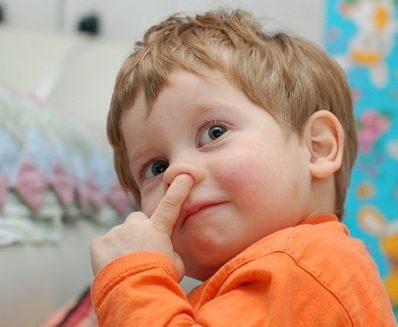 It can get there by chance, during the game, from the interest of the child and due to other factors. The most important thing is to extract it as quickly as possible, which is not always possible to do by yourself. In this case, an otolaryngologist can help, who can quickly remove a foreign object with minimal damage.
It can get there by chance, during the game, from the interest of the child and due to other factors. The most important thing is to extract it as quickly as possible, which is not always possible to do by yourself. In this case, an otolaryngologist can help, who can quickly remove a foreign object with minimal damage.
It is necessary to get rid of a foreign body from the nasal cavity as soon as possible due to possible complications. Especially dangerous when the subject is lowered into the throat area, causes strong inflammatory processes or a long time goes unnoticed. The presence of such a problem can be detected by various signs, sometimes the children themselves talk about what happened, especially when it causes severe discomfort.
Ways to get in the nose of foreign objects
Different bodies can get into the nasal cavity in different ways, knowing this is important when trying to extract it. Foreign objects enter the child’s nose in the following ways:
- insects and various midges, which can occur during a normal walk, as well as dust and other bodies from the environment, usually fall naturally.
- violent - the most common way when a child puts various objects into the nasal cavity, this can also happen as a result of injury;
- the iatrogenic pathway is the consequences of a medical intervention, when there are cotton swabs or various instruments, more precisely its tips, in the nose;
- hoal holes are also the cause of such a problem, when a child choked or during vomiting food particles can penetrate the nasal cavity.
Besides, foreign objects divided into different kinds. Depending on this classification, various complications are possible, shape, size and material are also of great importance.
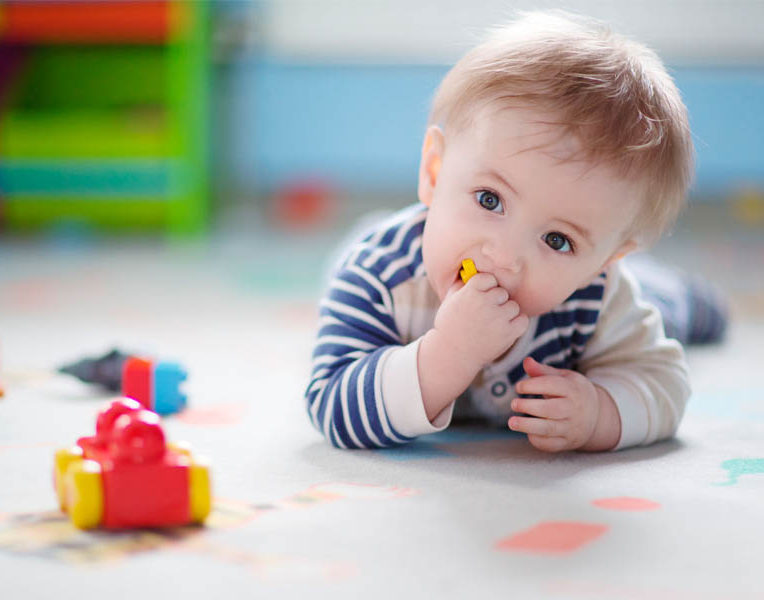 Stand out:
Stand out:
- organic, for example, pieces of food, bones of berries or fruits, various seeds;
- inorganic, such as buttons, parts of toys, paper, polyethylene, beads, foam rubber, and so on;
- living bodies: midges, larvae, insects;
- metal objects, such as coins, studs, screws and others.
Also, foreign bodies are divided into non-contrast and X-ray sensitive. The latter type of objects makes it possible to determine the size and shape of an object with the help of X-rays, thus making it most safe to remove it. In some cases, the parents themselves can easily remove the foreign body, it is also possible its independent exit from the nasal passages, especially if it is round and small or soft.
But it is impossible to delay with professional help, since it is very dangerous for a child. A foreign object may cause injury to the mucous membrane, cause severe inflammatory processes and cause other complications.
If there is a foreign object in the nasal cavity, various symptoms. At the initial stage, they may not attract the attention of parents, which is the problem of diagnosing the disease. If the baby has the following symptoms, check the nasal passages even for prevention:
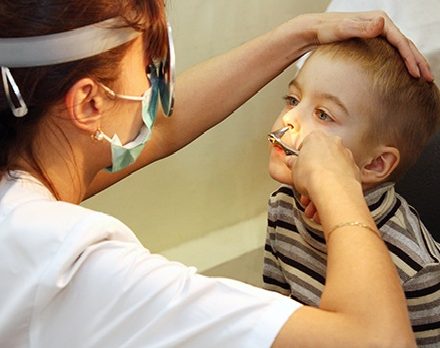
If the object is in the nose for a long time, then there are also other symptoms that can not be ignored:
- availability purulent discharge yellow or greenish tint;
- unpleasant smell from the nasal cavity;
- inflammation and redness of the mucous membrane;
- stone formation - rhinoliths.
If you experience these symptoms, you should immediately consult a doctor. With skill, one can provide first aid to a child, but only if there is confidence that the situation will not get worse.
Diagnosis problems and extraction methods
To determine this problem, the doctor must conduct an inspection and survey. When a child is very small and can not describe his feelings, the doctor has more difficulty. Rhinoscopy is also often performed; fibrinoscopy may be required if the item is in the lower part of the nasal cavity.
When these methods do not bring results, the examination is carried out using a metal probe that “feels” the nasal cavity. In addition, doctors use radiography, tomography of the relevant departments, ultrasound or contrast fluid, if necessary. Most often, the latest research methods are resorted to in situations with children up to one year old, who not only cannot describe their feelings, but also do not allow to conduct a quiet examination.
Usually, the foreign body is removed with a blunt metal hook. In some cases, surgery may be required. Especially if the object has long been located in the nasal cavity and granulations have already formed. Even if the parents manage to remove the extraneous object themselves, it is necessary to consult a specialist for inspection.
What is absolutely forbidden to do
At home, you can give the baby first aid, but you need to know exactly what you can do, and what manipulations are strictly prohibited. Under no circumstances should you do the following:
- it is forbidden to try to remove the object with fingers, tweezers, cotton swabs and other sharp and long objects, in most cases this leads to deeper penetration of the body;
- do not use drops in the nose, use sprays and rinse with water;
- do not press down the nasal passage in which the object is located;
- do not feed or water the child until the problem is resolved;
- it is forbidden to carry out any manipulations at all until the arrival of the ambulance, if the object is not visualized.
First aid
First aid to a child in such a situation includes the following actions.
Popular
- Breast cancer is curable at any stage.
- The remedy for the cold Sinupret
- Azitrox - official instructions for use
- Chicken-bjaka: allowed antibiotics were found in Russian chicken
- Oral Cancer: Symptoms and Treatment
- Dark and thick blood during menstruation.
- Modern analogues of doxycycline tablets
- Is it possible to die from pneumonia
- What earwax will tell all about your health
- Tussin: instructions for use



